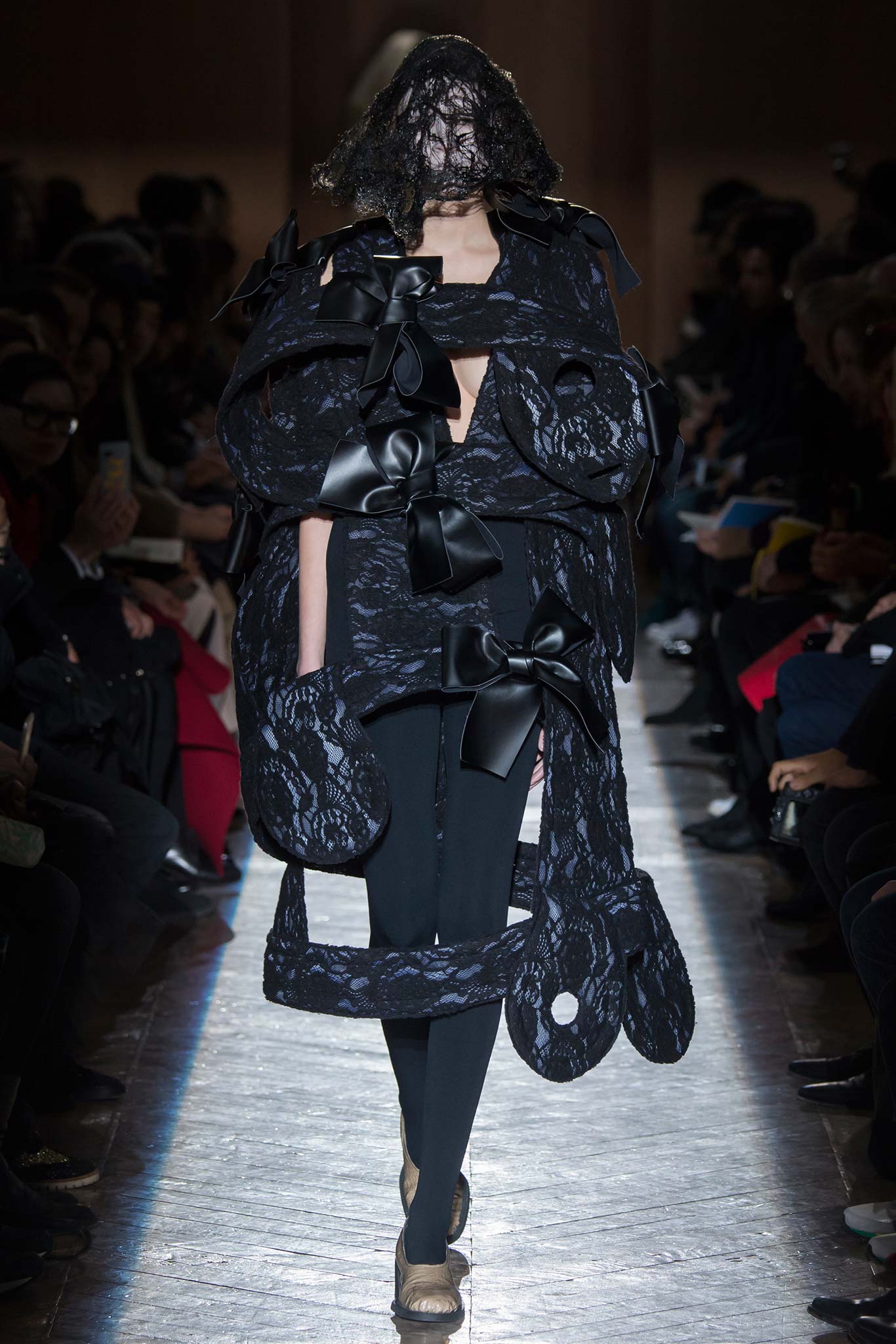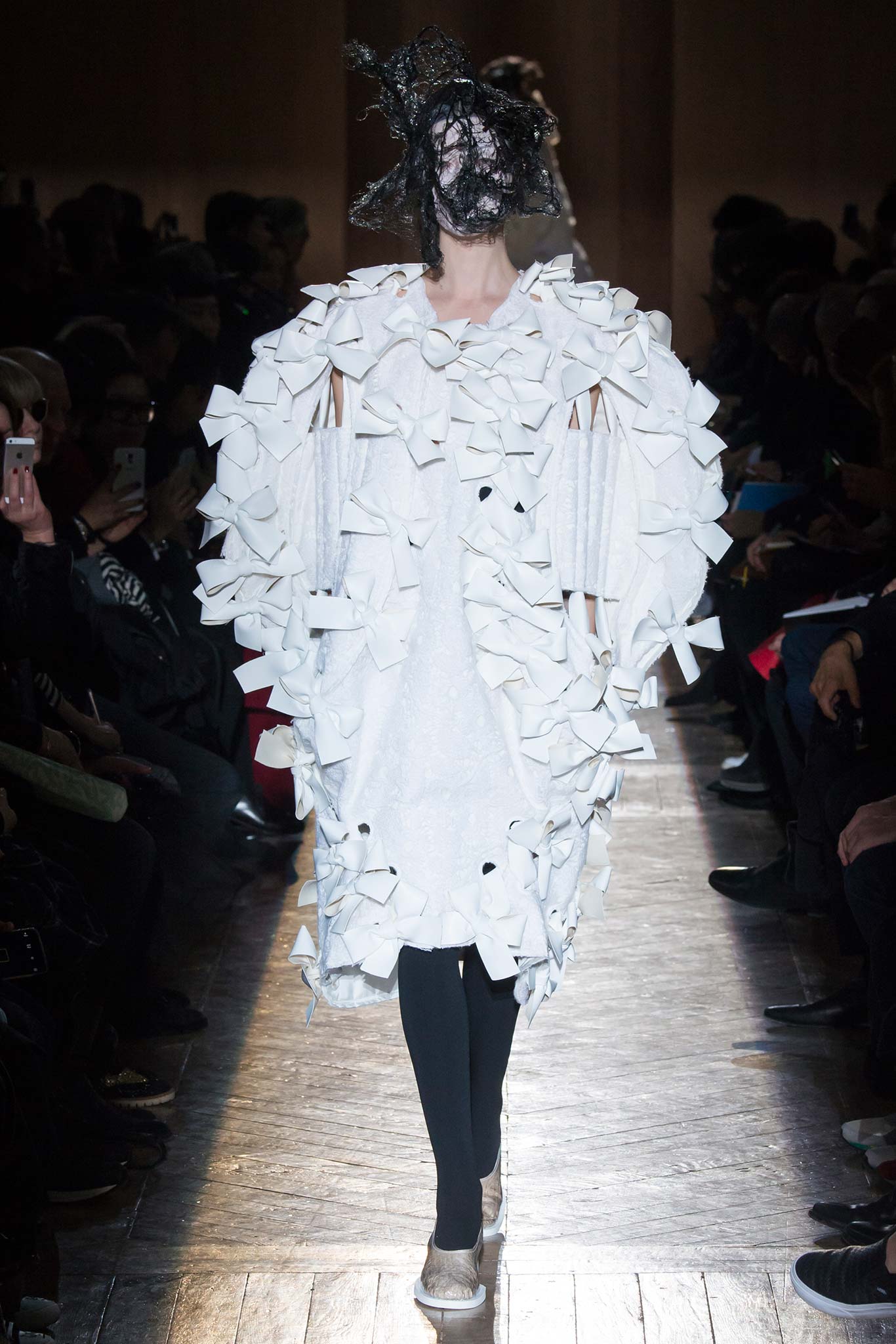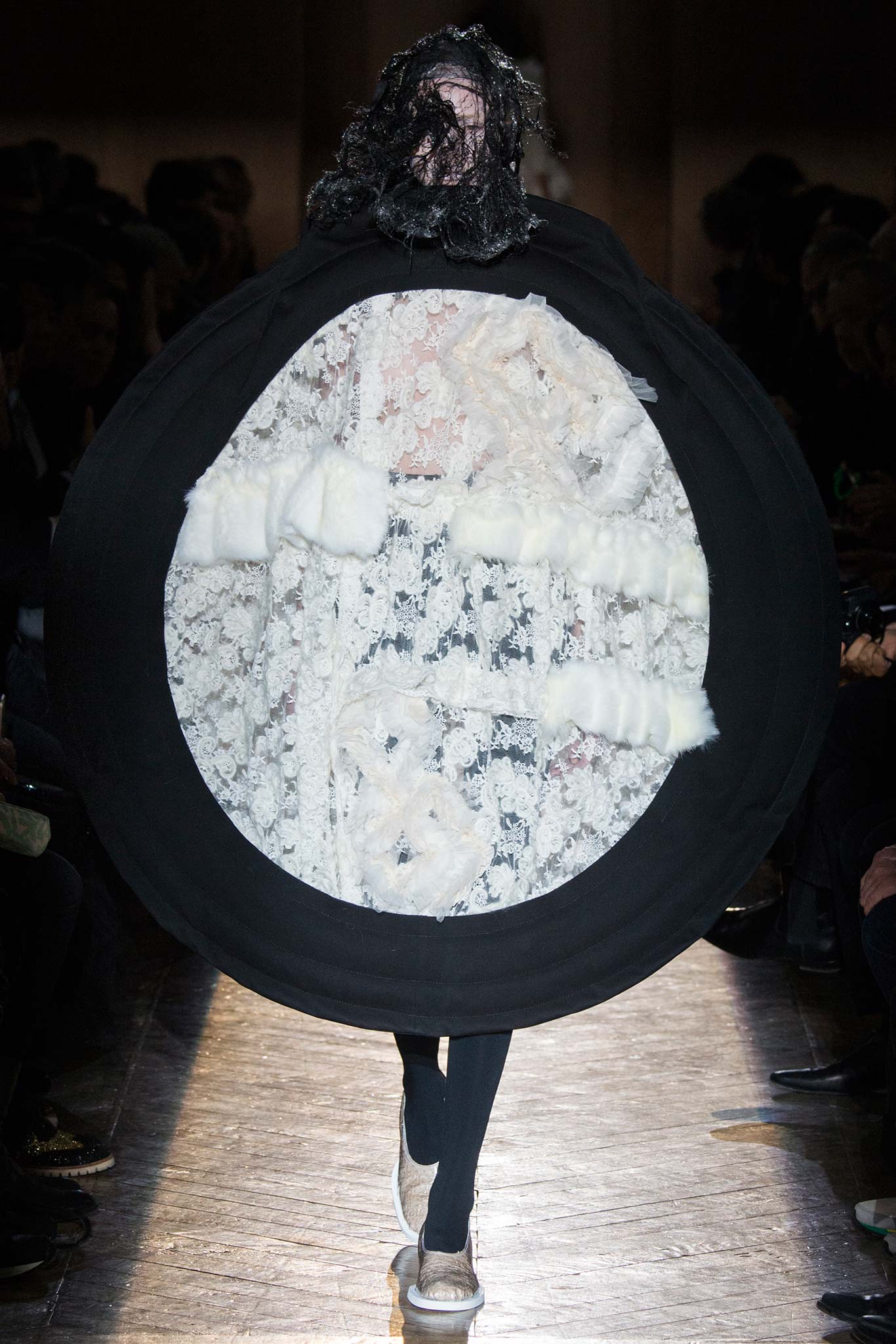
COMME DES GARÇONS AUTUMN/WINTER 2015-16 READY-TO-WEAR PARIS FASHION WEEK
There is now a ritual for Rei Kawakubo’s Comme des Garçons shows. Word comes that the designer is really not sure, that this time it has taken so much out of her to produce the latest collection, there really might not be another one.
This is not some sort of false modesty or strange dance with members of the press. She is never blithely or blindly confident in what she is doing, this woman who has proved herself time and time again throughout her career. But this is also one of the reasons she is a great designer: She pushes herself beyond a comfort zone, struggles and never rests on her laurels, expects more from herself and in so doing, knows she is asking much from her audience.
What Kawakubo produced today could be seen as part of a quartet of shows that began with Spring 2014, when the designer knew she was stepping beyond bounds that had seemed set in fashion. This season felt like a culmination, linking many of her concerns through the past, present, and future of her collections. This was the real epic of the four—despite only being 18 looks long. Away from the bloody anger of last season, that revenge play of sorts, it turned into a kind of requiem today. There was a sense of sadness, grief, and finality in the collection—and the audience who were there at the staging of it really felt it. But this was not the finality of Rei Kawakubo’s last stand—you believe her compulsion to express and make something will continue to outweigh her self-doubts. This was the finality of death she was addressing in these clothes.
“The ceremony of separation” was how the designer defined what she did today. A strange, mournful pas de deux between the living and the dead—expressed in the steps as the models passed one another, turning and facing their counterparts in their massive silhouettes, moving to the side, and carrying on slowly and deliberately. It brought to mind a line from Charles Dickens’ Great Expectations: “Life is made of ever so many partings welded together.”
In this ceremony, most of Kawakubo’s key power colors were at play: white, black, and gold. The significance of this palette cannot be underestimated; these hues are the expression of meaning time and again for Kawakubo. Here they took on the ritualized connotations of grief: white as the Eastern expression of loss, black as the Western, and gold the most ornately ceremonial with its role in the burial rituals and death masks to be found in ancient tombs, particularly those of the Egyptian pharaohs. The living and the dead often faced each other in an opposition of color, the living in black, almost as if in Victorian mourning, with those that have gone in gold and white.
Lace was the material predominantly used for these silhouettes, ornately embellished or built with bows—another familiar Comme motif. These features gave the collection a ghostly delicacy and intricacy that cannot be seen so easily in photographs; neither can the overall complexity of these silhouettes be conveyed in a catwalk shot. It is a collection somewhat more refined than the other parts of the quartet. The color and decoration also brought to mind shows of Comme past—particularly “White Drama,” the Spring 2012 offering that conveyed the connotations of the marriage ceremony. Yet here was not the celebration of coming together: The bows were the ties that bind while pulling apart; the wedding dress became a death shroud.
Frédéric Sanchez’s choice of Max Richter’s music—remixed from the Blue Notebooks album—reinforced much. As did Julien d’Ys’ startling hair, which from a distance looked like a lace veil. It is not often that a fashion show becomes moving, with each part set in motion to convey real meaning. This was one of those times.
















